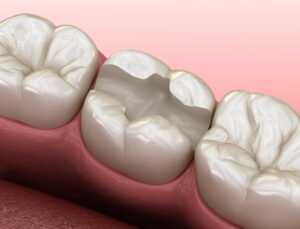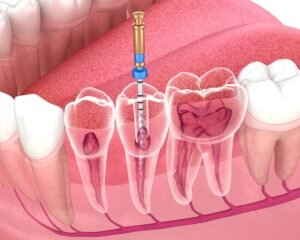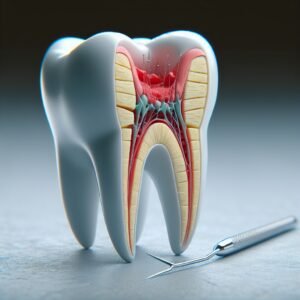ODSP (Ontario Disability Support Program) provides limited dental coverage for eligible recipients. This coverage typically includes basic dental services, such as examinations and cleanings.
Understanding ODSP dental coverage is crucial for recipients seeking necessary oral health care. This program aims to support individuals with disabilities by offering essential services. Dental health significantly impacts overall well-being, making access to care vital. Many people may feel overwhelmed by the process of navigating coverage details and finding providers.
Knowing what services are covered can help recipients make informed decisions about their dental care. This guide will clarify the benefits available under ODSP and how to access them effectively, ensuring that individuals receive the dental care they need without unnecessary stress.
Introduction To Odsp Dental Coverage
ODSP Dental Coverage helps low-income individuals access necessary dental care. It covers basic services like check-ups, fillings, and extractions.
This support is essential for many families. Dental issues can lead to pain and other health problems. Without coverage, many cannot afford treatment.
Eligibility is based on income and other factors. Each person may have different dental needs. Understanding these basics can help in navigating the system.
Low-income individuals benefit greatly from this coverage. It ensures they receive important dental care. Regular check-ups can prevent serious issues down the road.
Eligibility Criteria
To qualify for ODSP dental coverage, applicants must meet certain conditions. These include being a recipient of Ontario Disability Support Program (ODSP) benefits. Individuals must also demonstrate that dental care is medically necessary. Conditions like severe dental issues or chronic illnesses qualify for coverage.
The application process is straightforward. First, gather all necessary documents. This includes proof of ODSP enrollment and a letter from your dentist. Next, submit the application form to the local ODSP office. Wait for a decision, which usually takes a few weeks. If approved, dental services can begin.
Scope Of Dental Benefits
The ODSP dental coverage offers various benefits for eligible individuals. It helps pay for essential dental care.
The types of covered procedures include:
- Routine check-ups and cleanings
- Fillings for cavities
- Extractions of teeth
- X-rays for diagnosis
- Root canals for infected teeth
Some limitations and exclusions apply to the coverage. Cosmetic procedures, like teeth whitening, are not included. Orthodontic treatments, such as braces, may also not be covered. Waiting periods may exist for certain services.
Comparing Odsp With Other Dental Plans
ODSP offers dental coverage for eligible individuals. This is a great option for those who qualify. Private insurance often has more comprehensive plans. However, they come at a higher cost. Many people find ODSP easier to access.
Private insurance may cover more services. This can include cosmetic procedures, which ODSP does not cover. Patients with private insurance often face lower out-of-pocket costs.
| Feature | ODSP | Private Insurance |
| Cost | Low or no cost | Higher premiums |
| Coverage | Basic dental services | Comprehensive services |
| Eligibility | Must qualify for ODSP | Anyone can apply |
Interplay with other government programs can affect coverage. Some programs may provide additional support. Knowing your options helps in making the best choice.
How To Access Services
Accessing dental services under ODSP is simple. Start by finding participating dentists. Use the ODSP provider directory online to search for local dentists. Ensure they accept ODSP dental coverage to avoid extra costs.
Next, schedule your visits. Call the dentist’s office to set up an appointment. Make sure to ask about any required documents. Bring your ODSP card to every visit. This helps in covering your expenses.
Plan your visits during regular business hours. This makes scheduling easier. If you have any questions, don’t hesitate to ask the dentist’s staff. They can provide helpful information about your dental care.
Cost Considerations
Understanding co-payments is essential for managing dental costs. Co-payments are the amount you pay for each dental visit. This amount can vary based on the treatment type. Some treatments have higher co-payments than others. Knowing your co-payment helps in budgeting for dental care.
There are also additional financial support options available. These options can help cover your dental expenses. Some organizations offer grants for low-income families. Others provide payment plans to ease financial burdens. Contact your dentist’s office to learn about these options.
Checking with local charities might reveal more support. Many communities have programs that assist with dental care costs. Be proactive in exploring all available resources.
Rights And Responsibilities Of Beneficiaries
Beneficiaries have important rights under the ODSP program. These rights ensure access to necessary dental care. Patients can request clear information about services available to them. They can choose their dental provider as long as the provider is approved.
Patients should receive respect and dignity during their visits. They can report any concerns or complaints regarding their care. It’s crucial to understand that fraud is a serious issue. Reporting suspicious activities helps protect everyone’s benefits.
Being aware of these rights ensures a smoother dental experience. Patients should always feel empowered to ask questions.
Improving Oral Health Outcomes
Preventive care is key to improving oral health. Regular check-ups help catch problems early. Education about oral hygiene is vital. Teaching proper brushing and flossing techniques is essential.
Success stories show how dental coverage changes lives. Many people report better smiles and confidence. Families can save money on unexpected dental costs. Positive impacts include healthier communities and reduced dental anxiety.
| Success Stories | Positive Impact |
| Improved oral hygiene | Healthier communities |
| Increased access to care | Less dental anxiety |
| Better overall health | Enhanced quality of life |
Navigating Challenges And Appeals
Many recipients face challenges with ODSP dental coverage. Common issues include denied claims, limited services, and long wait times. Understanding these problems is key to getting help.
Filing an appeal is a crucial step. Start by reviewing the denial letter carefully. Note the reasons given for the denial. Gather all necessary documents to support your case.
Next, follow these steps:
| Step | Description |
| 1 | Contact the dental office for clarification. |
| 2 | Prepare a written appeal detailing your case. |
| 3 | Submit the appeal to the ODSP office. |
| 4 | Follow up to ensure it is processed. |
Future Of Odsp Dental Coverage
The future of ODSP dental coverage may see significant changes. Policy updates could improve access to dental care for those in need. Advocates are pushing for better support and funding for dental services.
Community support is vital. Many organizations work together to raise awareness. They help educate people about available resources. Advocacy can lead to better health outcomes for individuals under ODSP.
Regular communication between policymakers and communities is essential. This ensures that the needs of individuals are met. A collaborative approach can strengthen dental coverage for everyone.
Frequently Asked Questions
What Does Odsp Dental Coverage Include?
ODSP dental coverage typically includes essential services like exams, cleanings, fillings, and extractions. It may also cover dentures, partials, and certain dental surgeries. However, cosmetic procedures are usually not included. Always check with your provider for specific details related to your plan.
How To Apply For Odsp Dental Coverage?
To apply for ODSP dental coverage, you must first qualify for ODSP benefits. After that, you can fill out the necessary application forms available online or at local ODSP offices. Documentation such as proof of income and residency may be required.
Ensure all forms are completed accurately to avoid delays.
Who Is Eligible For Odsp Dental Benefits?
Individuals receiving Ontario Disability Support Program (ODSP) benefits are eligible for dental coverage. This includes people with disabilities who meet specific financial criteria. Eligibility also extends to dependents of ODSP recipients. Always verify your status and benefits with your caseworker to ensure coverage.
How Often Can I Access Dental Services Under Odsp?
Under ODSP, you can access dental services annually for most preventive care. However, additional treatments may be covered based on medical necessity. Always consult with your dentist and review your coverage limits to plan your appointments effectively.
Conclusion
Odsp dental coverage provides essential benefits for individuals and families. Understanding your options can lead to better oral health. Take advantage of the services available to you. Prioritize regular check-ups and preventive care. This proactive approach not only saves money but also ensures a healthier smile for years to come.










